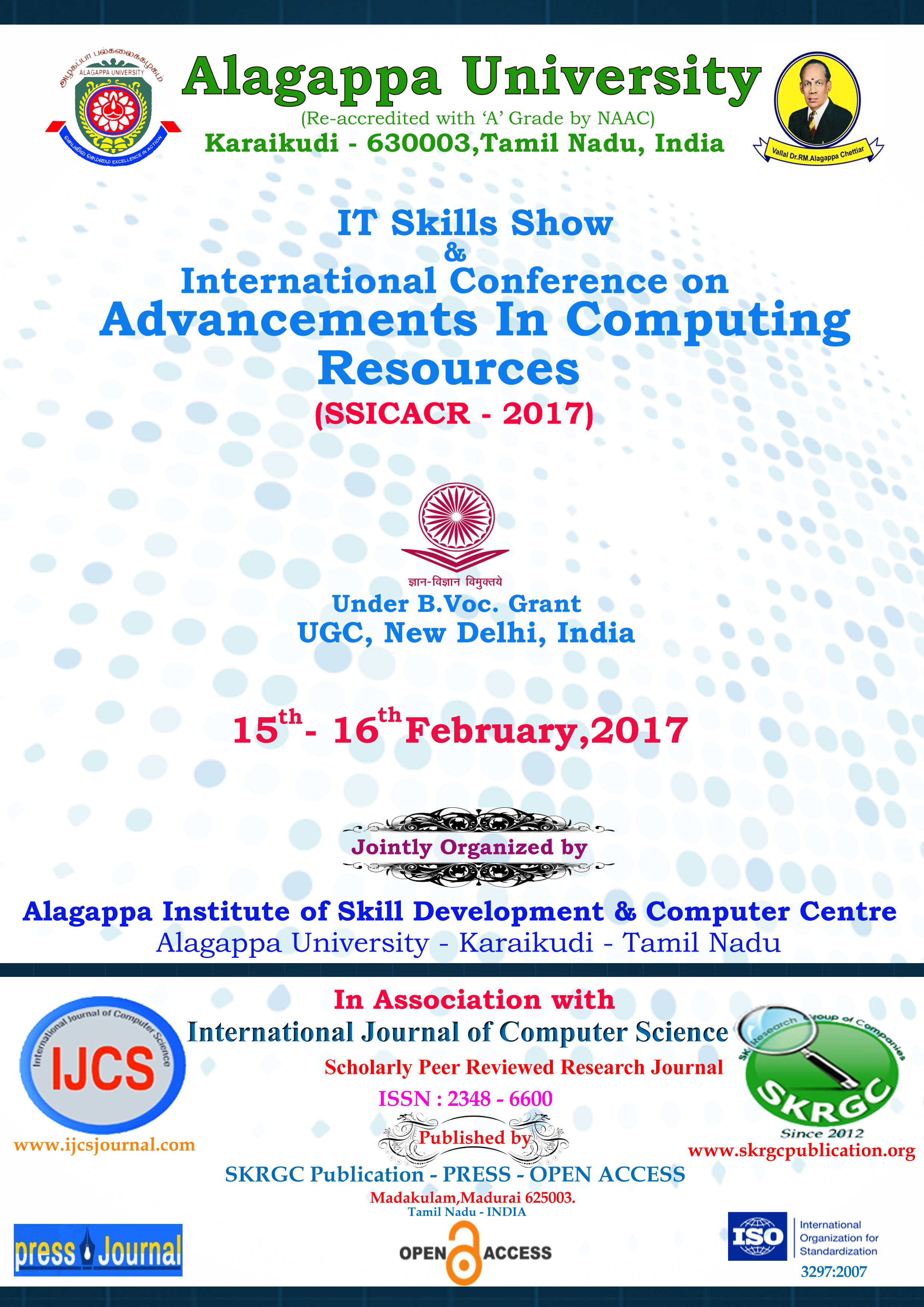Study on Data Mining Techniques for Diabetes Mellitus
IT Skills Show & International Conference on Advancements in Computing Resources, (SSICACR-2017) 15 and 16 February 2017, Alagappa University, Karaikudi, Tamil Nadu, India. International Journal of Computer Science (IJCS) Published by SK Research Group of Companies (SKRGC)
Download this PDF format
Abstract
Data mining is an analytic process designed to explore large amount of data in search of consistent patterns and systematic relationships between variables and then to validate the findings by applying the detected patterns to new sub sets of data. The ultimate goal of data mining is prediction and predictive data mining is the most common type of data mining. The process of data mining consists of three stages 1) Initial exploration 2) Model building and 3) Deployment i.e., the application of the model to new data in order to generate prediction. In this paper, we discovered the unseen but important risk factors of diabetes and their relationships. We used the above mentioned three stages of data mining to identify how different risk factors contribute towards diabetes and how diabetes contribute to other diseases.
References
[1] Eleni Georga, Vasilios Protopappas, 2009. “Data Mining for Blood Glucose Prediction and Knowledge Discovery in Diabetic Patients: The METABO Diabetes Modeling and Management System” 31st Annual International Conference of the IEEE EMBS Minneapolis, Minnesota, USA, pp.5633-5636
[2] Patil.B.M, R.C.Joshi, Durga Toshniwal, 2010. ” Association rule for classification of type-2 diabetic patients”, in Proc.2nd IEEE International Conference on Machine Learning and Computing (ICMLC), pp. 330-334
[3] Hian Chye Koh and Gerald Tan, 2005. "Data Mining Applications in Healthcare", Journal of Healthcare information management, Vol. 19, No. 2, pp. 64-72.
[4] Reaven. G.M, 1988. “Role of insulin resistance in human disease”, Diabetes, vol. 37, no.12, pp. 1595-1607.
[5] Pickup.J.C, G.Williams, (Eds.), Textbook of diabetes, Blackwell Science, Oxford.
[6] Frawley and Piatetsky-Shapiro, 1996. Knowledge Discovery in Databases: An Overview. The AAAI/MIT Press, Menlo Park, C.A.
[7] Guo, Yang, Guohua Bai, and Yan Hu. "Using Bayes Network for Prediction of Type-2 Diabetes." In InternetTechnology And Secured Transactions, 2012 International Conferece For, pp. 471-472. IEEE, 2012.
[8] Jiawei Han, Micheline Kamber, “Data mining: concepts and techniques”,second edition.
[9] Ordonez C. 2006. “Comparing association rules and decision trees for disease prediction,” in Proc.Int.Workshop Healthcare Inf.Knowl.Manag., pp.17–24
[10] Quentin.J, Truatvetter, P.Devos, A. Duharnel, R.Beuscan, 2002. “Assessing Association rules and decision trees on analysis of diabetes data from the DiabCare program in France” stud health technol inform, 90:557-61.
[11] Frank Lemke and Johann-Adolf Mueller, 2003. "Medical data analysis using self-organizing data mining technologies," Systems Analysis Modelling Simulation, Vol. 43, No. 10, pp: 1399 - 1408.
[12] Hsinchun Chen, Sherrilynne S. Fuller, Carol Friedman, and William Hersh, 2005. "Knowledge Management, Data Mining, and Text Mining In Medical Informatics", Chapter 1, eds. Medical Informatics: Knowledge Management And Data Mining In Biomedicine, New York, Springer, pp. 3-34.
[13] Tarak Chaari, Frederique Laforest and Augusto Celentano, “Service-Oriented ContextAware Application Design”, LIRIS, INSA Lyon, Dipartimento di Informatica, Università Ca’ Foscari di Venezia Via Torino 155, 30172 Mestre (VE), Italia.
[14] Theodor Chris Panagiotakopoulos, Dimitrios Panagiotis Lynras, Miltos Livaditis, Kyriakos N.Sgarbas, George C.Anastassopoulos and Dimitrios K.Lymberopoulos, 2010, “A Contextual
Keywords
Attribute Reduction, Decision tree induction, Gini index.

